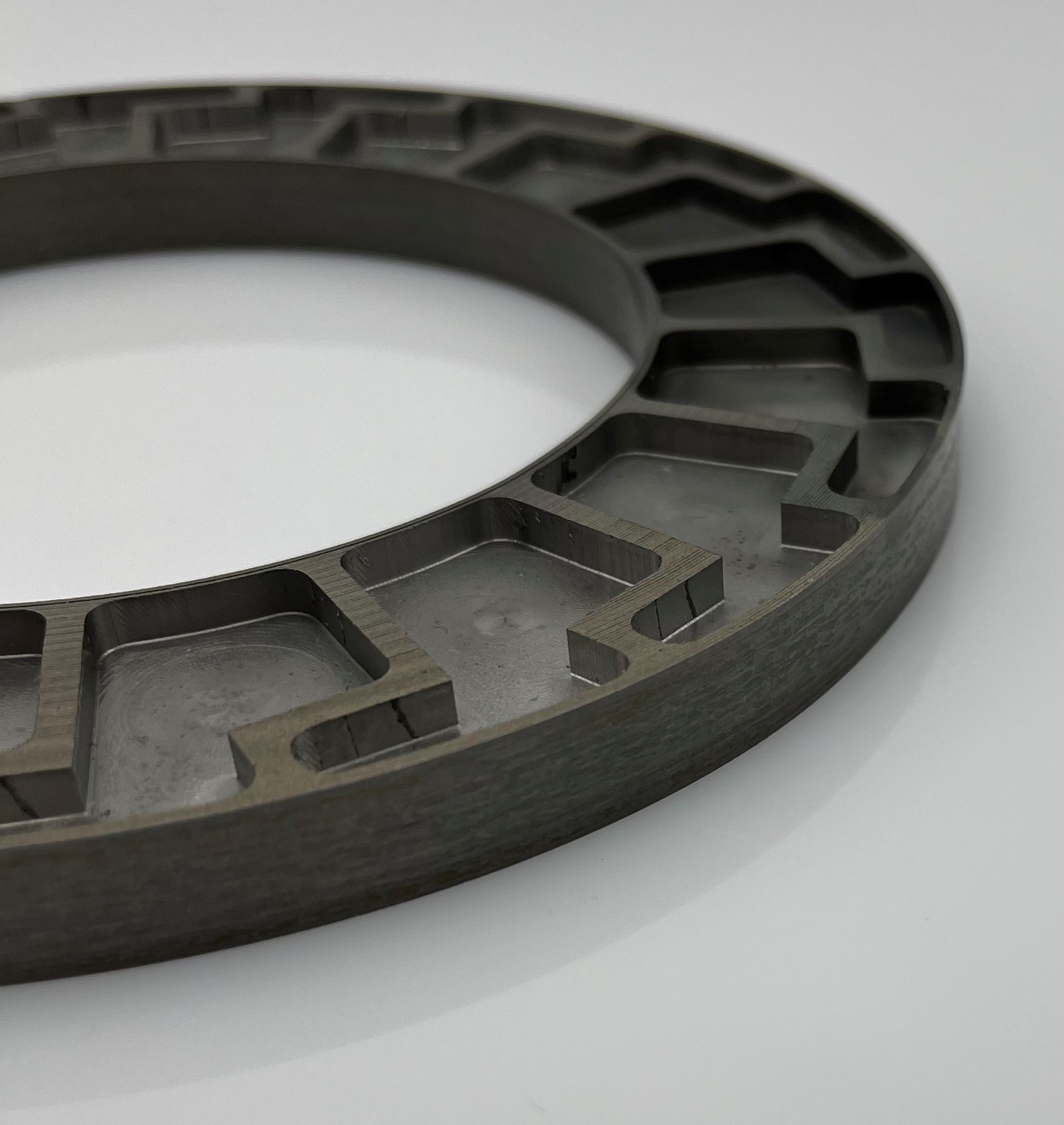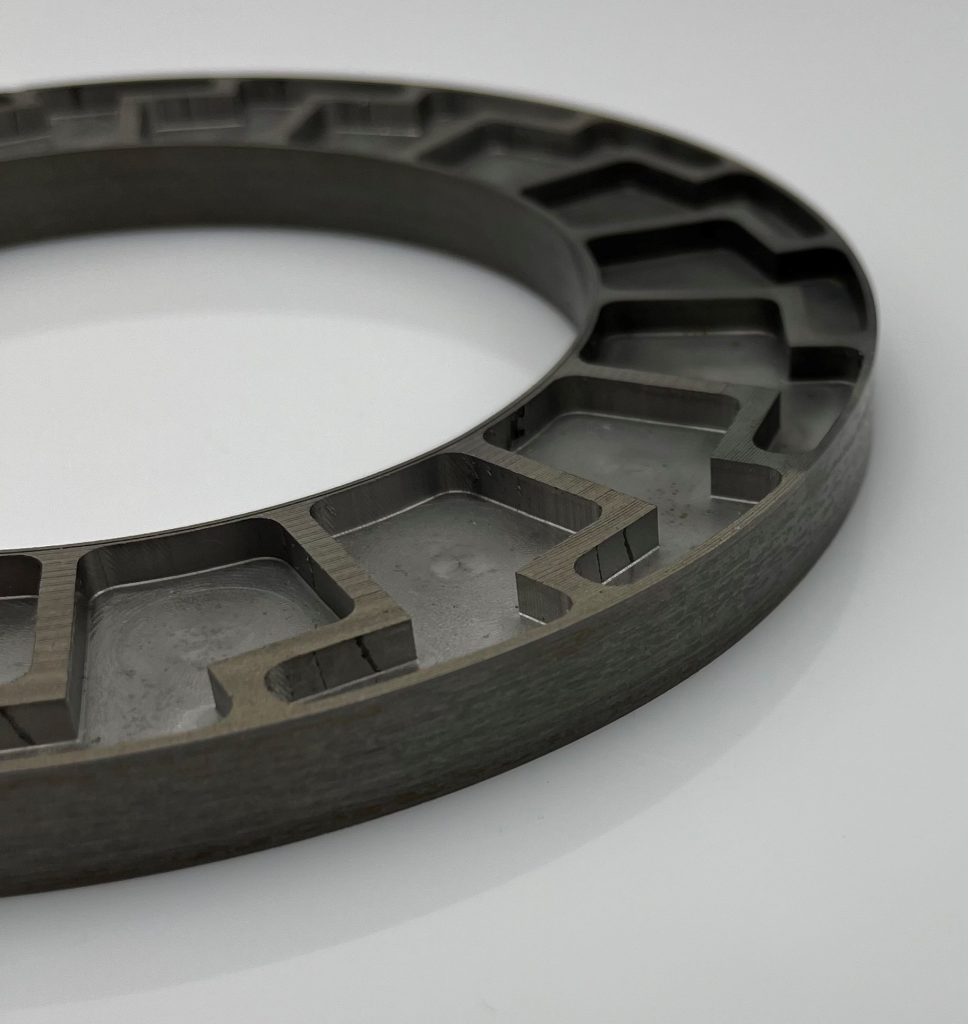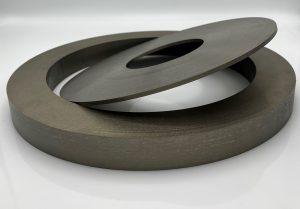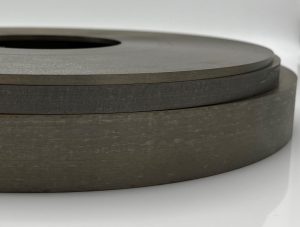Axial flux stator/rotor: A new level of precision of wound lamination stacks
Stators and rotors made from electrical sheet are required for axial flux motors. Electrical sheet is wound and welded or bonded for this purpose. Grooves for stators are punched or milled and subsequently treated using a specially developed method.

SWD winding machine for wound stators and rotors
We have developed bonding varnish winding to produce wound stators and rotors. With the SWD winding machine, we have optimized and built this production process for the series production of wound stators and rotors. In this process, the material is wound up with a bonding varnish (Backlack) coating and the winding is then bonded into a very strong and stable lamination stack. Mechanical machining is no problem and makes installation much easier.
Why you should use bonding varnish winding for axial flux lamination stacks:
Bonding varnish windings enable axial flux bonding varnish (Backlack) stacks to be produced with maximum precision. Thanks to the full-surface connection, even delicate geometries can be introduced precisely.
Bonded axial flux lamination stacks are very stable, which makes further processing and assembly easier. Thanks to the wide-area connection, the axial flux bonding varnish (Backlack) stack can be machined like a milled part (holes, threads, etc.). Installation can be carried out without requiring any additional components.
The material can be wound directly onto a hub, which subsequently remains an integral part of the stator or rotor. A high-strength stator or rotor with integrated hubs and/or threads can therefore be realized using this process, eliminating the need for other components.
The laminations do not fan out and the full-surface connection reduces vibration and noise, something which is ideal for meeting the increasing demands of the market.
Dirt and particles are firmly bonded thanks to the wide-area connection. The cleanliness is higher. No liquid is drawn in between the laminations.
Full-surface bonding improves thermal conductivity within the lamination stack, as bonding varnish (Backlack) has a better thermal conductivity than air. Even optimized bonding varnish (Backlack) with higher thermal conductivity can be achieved.
Bonded axial flux lamination stacks can be mass-produced using state-of-the-art processes and with maximum reliability. Our fully digitalized processes provide more transparency than any other process.
What our employees have to say:
“Wound and bonded cores for axial flux motors perform several functions.”

Dr Hannes Weiss
Innovation engineerAdvanced punching and winding of electrical coils
Punching and winding of electrical steel strip into a stator or rotor winding has long been a well-known technology and the start and the end are welded on in this process. The speed of winding is limited by the punching and the precision of the punching operations on the finished winding.
Impressions
Our specialist will be happy to answer any questions you may have.
Fact box
- Wound stators and rotors can be welded or bonded
- Tried-and-tested technology
- Bonded windings combine all the benefits of bonding varnish (Backlack)
- Bonding varnish (Backlack) improves the performance of your electric motor
- Maximum process reliability in series production



